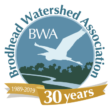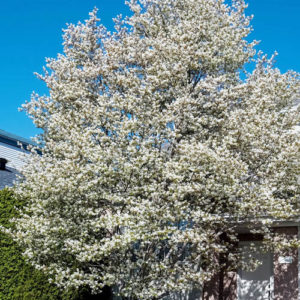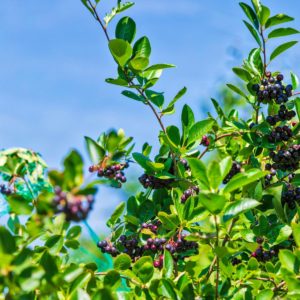Elderberry (Sambucus nigra ssp. canadensis)
$30.00
Plant Size: 1 Gallon
Name: American Elderberry – Sambucus canadensis
Type: Shrub/bush
Growth Characteristics American elderberry is a woody, deciduous shrub, 5 to 12 feet tall and 6 to 10 feet wide. Plants will spread by root sucker and will form thickets if the suckers are not removed. In summer, small white flowers form in dense round clusters. Flowers are followed by a small purple-black fruit (called drupe) that is produced in drooping clusters from late summer to fall. The fruit is edible and when cooked can be used in pies, pancakes, and jellies. Elderberry flowers and fruits are used in winemaking. It requires a moderate amount of maintenance and is a moderately fast grower. Plant 6-12 feet apart.
Hardiness: Climate zones 4-8
Light Requirements: Full sun to partial shade.
Water Needs: It prefers moist conditions with good drainage and will tolerate occasional wet areas. Is resistant to heat and some drought.
Soil Preference: Tolerates a wide variety of wet to dry soils but prefers rich, moist, slightly acidic soil.
DISEASE, PEST AND DEER RESISTANCE
Deer browse the leaves, twigs and fruit. It has some susceptibility to canker, powdery mildew, leaf spot, borers, spider mites, and aphids.
SITE CONSIDERATIONS
Use this plant in naturalized areas, as a hedge, in a woodland, or along streams and ponds. It is a good addition to butterfly, edible, native, pollinator, or rain gardens. It is effective erosion control in moist sites. Due to the plants suckering and unkempt appearance, it is best not to use this shrub or tree in the home landscape.
Value to Wildlife and Insects
Wildlife also enjoys the fruits, and the arching branches provide a habitat for nesting birds.
ADDITIONAL FACTS UNIQUE TO THE SPECIES (IF ANY)
The twigs and fruit have been used to create dyes for basketry. Stems used to make flutes and whistles.
Availability: 6 in stock





